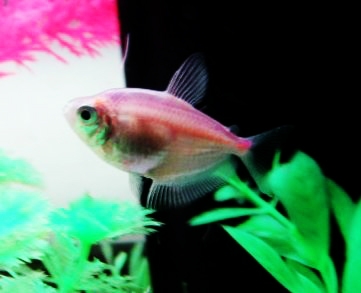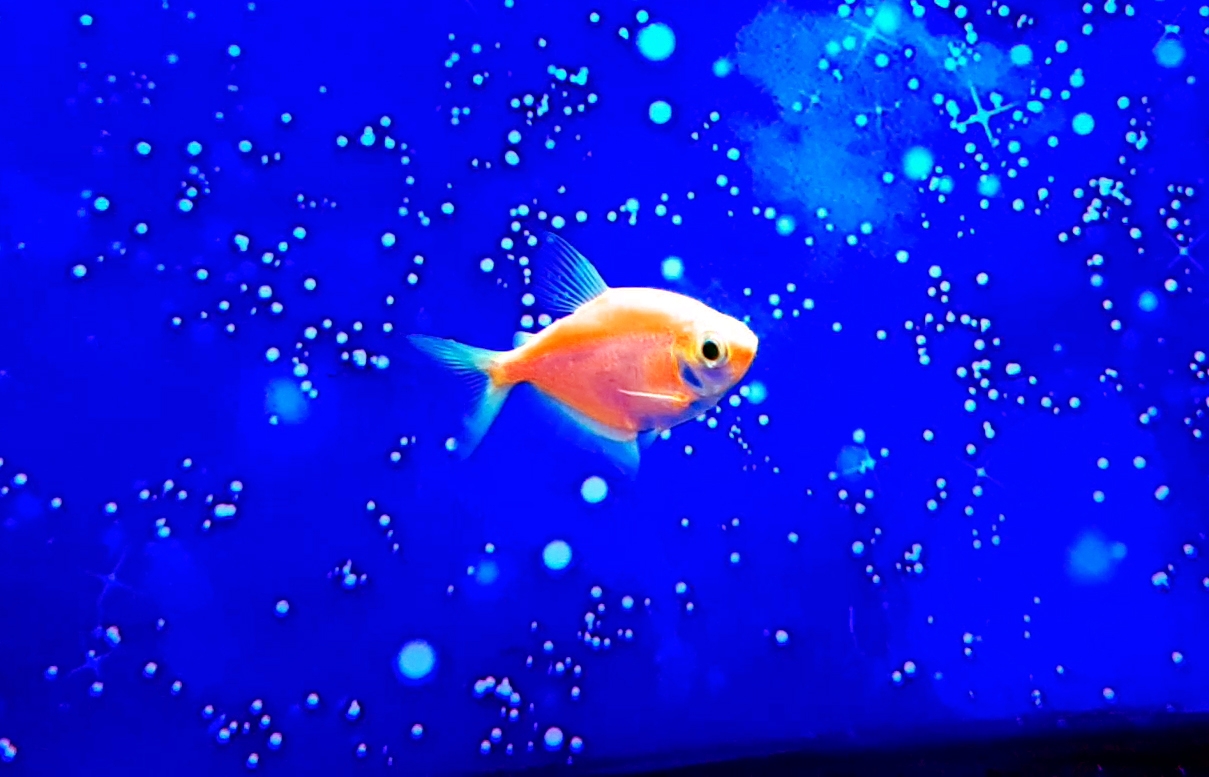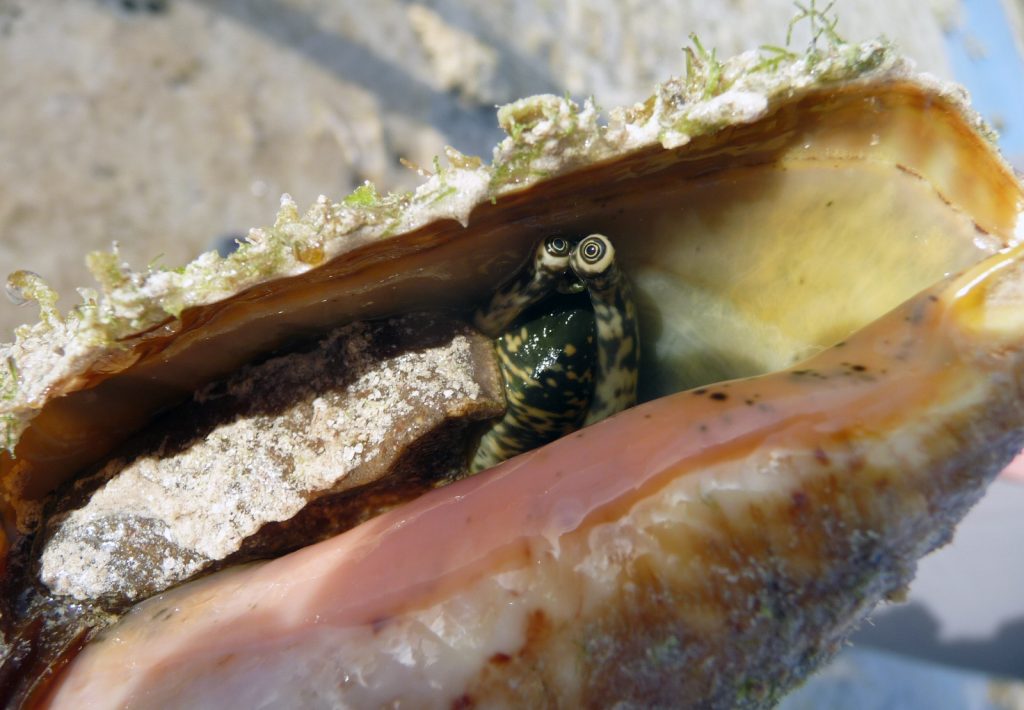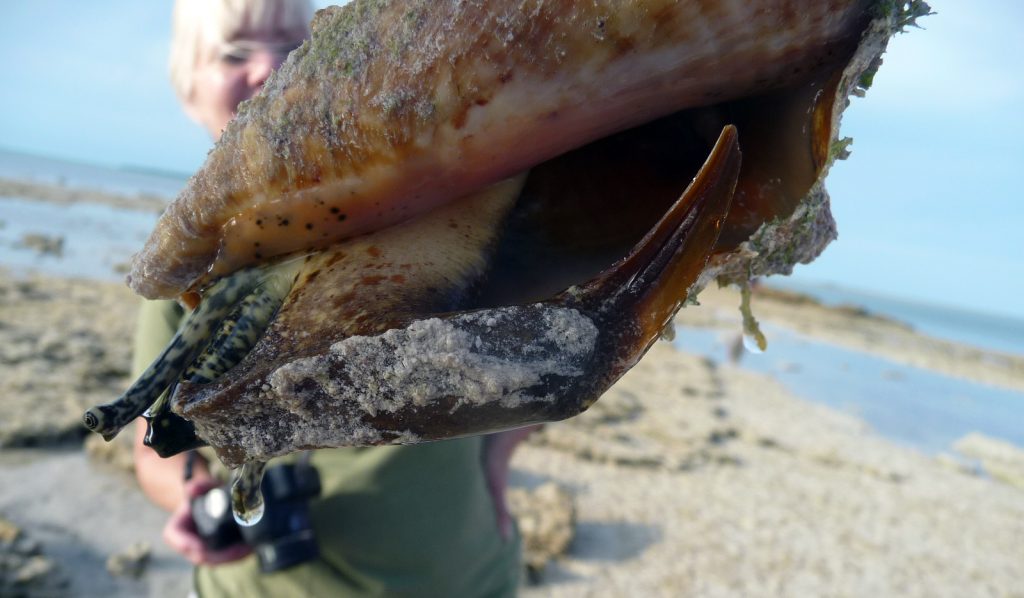Saltwater aquariums, though prized for their glorious colors and living reefs, are a massive undertaking. And the havoc the exotic fish trade wreaks on tropical sea life is no secret. But for people who are itching to adorn their homes with vibrant fish, science came up with an easy solution: fluorescent freshwater fish. And the pet industry lapped it up–but at what cost?
A couple years ago I stumbled upon the GloFish® website–yes, trademark and all–and I was transfixed by the words: “GloFish® fluorescent fish are born brilliant! They are not painted, injected or dyed. They inherit their harmless, lifelong color from their parents. They get their stunning color from a fluorescence gene and are best viewed under a blue light.”
I was floored. It read like an advertisement for a new car. Toying with living beings this way hardly seemed harmless. I needed to know more.
These fish were among the first genetically modified animals to have been made available on a commercial scale. But their journey to pet store shelves was not quite intentional. At the turn of the 21st century, scientists from Singapore were attempting to engineer fish who could glow in the presence of certain environmental toxins as a biomarker for pollutants. They inserted fluorescent jellyfish genes into zebrafish, creating the first iteration of glowing freshwater fish.
The patented technology eventually caught the eye of the company that would ultimately create and trademark the GloFish, available now in zebrafish, tetras, danios, sharks, and barbs. As I write this, the brand is currently marketing its “Mardi Gras collection” on its website, comprising two Moonrise Pink tetras, two Galactic Purple tetras, and two Sunburst Orange tetras, to commemorate the festive occasion.

Despite opposition from groups like the Center for Food Safety, the glowing fish made their way to American store shelves with a stamp of approval from officials who claimed that the captive fish posed no threat to wildlife or the food supply. (And a study later attempted to back that up, documenting that non-GMO male fish out-competed GloFish with female mates, which would eventually lead to the disappearance of the fluorescent trait in a population–should a stray GloFish ever make his way into the natural environment, that is.)
The GloFish line, from a commercial perspective, has been a massive success. The company’s sales now comprise about 10 percent of the entire aquarium industry.
And it’s easy to see why: Many people don’t want the hassle of setting up and maintaining a saltwater aquarium just to enjoy brilliantly colored fish in their living rooms. Freshwater is (relatively) easy. Plus, more and more consumers are becoming aware of the death and destruction caused by the saltwater fish trade, which pulls over 20 million fish from the waters of places like the Philippines and Hawaii every year and results in six fish deaths per live fish sold due to dangerous and cruel capture and shipping methods. And let’s not get started on the extensive coral reef damage.
Breeding fish in a captive, contained environment seemingly circumvents most of those issues.
But I was still left wondering if, throughout these past two decades of tinkering with the genetics of these tiny beings in a lab, anyone ever stopped to consider a fundamental question: What’s in it for the fish themselves? Admittedly, apart from making them the life of a house party, the modification doesn’t seem to inflict any other known physical changes on them. They eat, swim, and live just like regular zebrafish, tetras, and barbs. The process of breeding fish from already modified fish is not inherently invasive (unlike chemically dyeing or injecting inks into fish–two common, but undoubtedly cruel, practices in the aquarium industry that lead to illness and high mortality).
Yet, clearly, fluorescence won’t provide an average tetra with an evolutionary advantage, either. (Imagine a neon orange freshwater fish trying to hide from a predator behind a few strands of seaweed or a pile of grey rocks.)
So are we left with net result of zero in our cost-benefit analysis of GloFish welfare? Not quite.
The moment that Yorktown Technologies, the original company behind the GloFish, entered the picture, this genetic manipulation in the name of science became a gimmick.
The goal: Make the look and feel of saltwater tanks more accessible. Make freshwater fish prettier, more enticing, more consumable. Like a vacuum, a new car, or a frozen burrito, these fish needed to be branded.
The aquarium industry has turned these fishes’ genetics into a commodity that it markets to us as an innovative way to spruce up our home decor. After all, like any industry, it has to churn out fresh products to keep us interested. And, so far, it’s worked: There are over 9 million fish sold by this multi-billion-dollar industry living in American homes, from an endless array of Betta fish varieties to the dainty angelfish and the goldfish brought home after a carnival game victory.
For many years, I was one of the millions of consumers lured in by the appeal of having my very own fish tank. In college, I was gifted with a tetra who looked remarkably like the “Moonrise Pink” variety of GloFish–with one major exception: He didn’t glow.

Miraculously, I loved this fish, whom I named Clapper, just the same, regardless of his slightly less lustrous hue. Clapper traveled with me from dorm room to dorm room, to my first house after graduation, and to my apartment after my relationship with my boyfriend at the time fell apart.
We shared many memories, including one that made my heart skip a beat: Midway through a thorough tank cleaning, I noticed that Clapper was missing from the jug I’d temporarily placed him in. Within a few seconds, I found him–on the floor, wedged between the washing machine and the wall. Somehow, I managed to slowly slide the machine out enough–without crushing the tiny being–and scoop him back into the water before suffocation set in.
I spent every day for months silently apologizing to him. Because I loved him.
I was diligent with his care, and Clapper remained physically healthy up until a couple of days before he passed. He met his expected lifespan of five years–and then some.
Yes, we shared many memories: memories of me crying; memories of me laughing; and, most often, memories of me leaving and coming back again, sometimes with a friend, or a new love, or a new painting.
Every day, though, Clapper stayed there, swimming in circles, silently watching me from behind his glass wall.
I didn’t know the inner toll captivity was taking on this social being for much of his life. I didn’t realize that he was lonely and isolated because tetras need schools to thrive. Or that with only a few artificial plants and rocks to enrich his environment, his life was just a slow, drawn-out death.
Today, most of us have started to question the ethics of confining magnificent mammals like dolphins and whales to the equivalent of a bathtub at marine parks for guests to gawk over. As the Animal Welfare Institute (AWI) explains, films like Blackfish have “challenged people to recognize the cruelty of keeping large, intelligent, and sentient animals in such small tanks.” However, AWI continues, fish are also “sentient—showing far more cognitive abilities than they are given credit for—and few, if any, spend their entire lives in the wild in the volume of water contained in a standard fish tank.”
Remember the fish who used a rock as a tool to crack open his meal? Or the pufferfish who builds an intricate sand sculpture to attract a mate? Fish scientist Dr. Culum Brown states that “it would be impossible for fish to survive as the cognitively and behaviorally complex animals they are without a capacity to feel pain.” The scientific research for fish complexity and sentience abounds, and in 2018, Smithsonian Magazine (finally) declared, “It’s official: Fish feel pain.”
Gaining traction for the notion of fish as individuals worthy of ethical consideration is an uphill battle, though, especially with outfits like Amazon offering up 1-gallon aquariums (a volume infinitely too small to house any fish species long-term) accompanied by descriptions like, “Compact design fits almost anywhere – perfect for dorm, office or home.”
As my fellow animal advocates and I try to rewrite the public discourse on how we ought to think about our relationships with fish, such captions continue hammering home the message: Fish are decorations, trinkets, objects. We don’t maximize their space for their well-being; we minimize it for our convenience.
And, in the case of our genetically engineered friends: We don’t have to settle for dull fish when we can have spectacularly striking GloFish.
It’s time to embrace fish for who, not what, they are. And we can start by letting them keep their natural colors.
Petition closed with 499 signatures.





